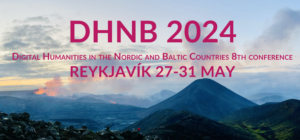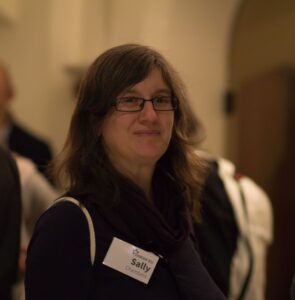
PROGRAMME | WORKSHOPS & TUTORIALS | POSTERS | CALL FOR PROPOSALS
TIMELINE | REGISTRATION | PRACTICAL INFORMATION
Keynote speakers:
The opening keynote will be given by Sally Chambers. The title of her presentation is: From Collections as Data experiments to sustainable Data Services: experiences at the intersection of cultural heritage and digital humanities

Sally Chambers is a member of the DARIAH, the Digital Research Infrastructure for the Arts and Humanities Board of Directors, where she focuses on the development of sustainable services and FAIR dataset portfolios in the context of the European Open Science Cloud (EOSC), the common European Data Space for Cultural Heritage and the Cultural Heritage Cloud. Previously, she was Secretary-General of DARIAH-EU, based in the Göttingen Centre for Digital Humanities, Germany. In February 2015, she joined the Ghent Centre for Digital Humanities (GhentCDH) where she coordinated DARIAH activities in Flanders and Belgium. Since October 2020 Sally has divided her time between GhentCDH and KBR, Royal Library of Belgium, where she coordinates the DATA-KBR-BE project to facilitate data-level access to KBR’s digitised and born-digital collections for digital humanities research. She has been an active participant in the international Galleries, Libraries, Archives and Museums (GLAM) Labs community, and a co-author of Open a GLAM Lab. In March 2024, Sally was appointed as Head of Research Infrastructures Services at The British Library in London. She combines this role with her work as DARIAH Director.
[Photo credit: Carmen Morlon]
The closing keynote will be given by Thor Magnusson. The title of his presentation is: Intelligent Instruments in the Experimental Humanities
 Thor Magnusson is a Research Professor at the University of Iceland and a Professor in Future Music at the University of Sussex. His work takes a humanities focus on the impact of digital technologies on musical creativity and practice, explored through software development, instrument design and performance. In addition to theoretical work, he has developed audio software, systems of generative music composition, written computer music tutorials and created various musical live coding environments.
Thor Magnusson is a Research Professor at the University of Iceland and a Professor in Future Music at the University of Sussex. His work takes a humanities focus on the impact of digital technologies on musical creativity and practice, explored through software development, instrument design and performance. In addition to theoretical work, he has developed audio software, systems of generative music composition, written computer music tutorials and created various musical live coding environments.
Magnusson’s monograph Sonic Writing: The Technologies of Material, Symbolic and Signal Inscriptions has recently been published with Bloomsbury Academic. The book explores how contemporary music technologies trace their ancestry to previous forms of instruments and media, including symbolic musical notation. The book underpins current research where Magnusson is running a European Research Council funded project called “Intelligent Instruments” (see http://www.iil.is). Magnusson is also a co-author of the Live Coding: A Users’ Manual book recently published by MIT Press.